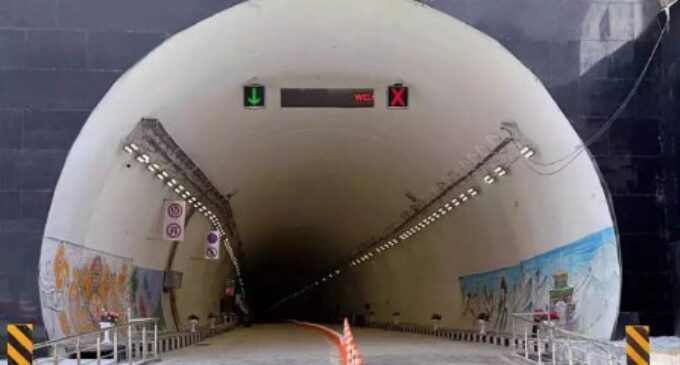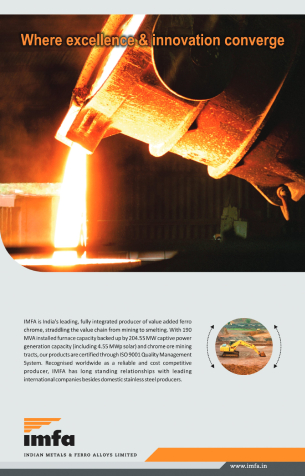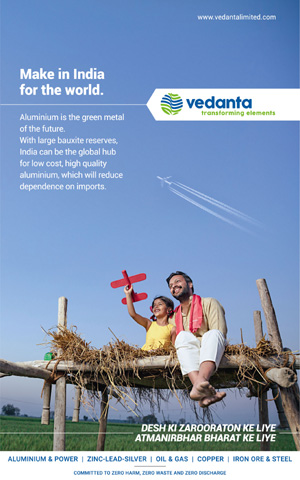PM inaugurates world’s longest twin-lane tunnel in Arunachal Pradesh

GUWAHATI, MAR 9 : The Sela Tunnel in Arunachal Pradesh, which Prime Minister Narendra Modi inaugurated on Saturday, will ensure all-weather connectivity to Tawang and forward areas, and facilitate smoother movement of troops.
Built by the Border Roads Organisation (BRO) under Project Vartak, the Rs 825 crore strategic project is a component of the Trans-Arunachal Highway system and the longest two-lane tunnel in the world at 13,000 feet.
The tunnel will bypass the treacherous Sela Pass. The Balipara-Charduar-Tawang Road, on which the tunnel has been constructed, is an important axis connecting Tawang region and provides connectivity to the hinterland upto Tezpur.
The road had various bottlenecks but the BRO addressed them by constructing Sela and Nechiphu Tunnels and the Bomdila Bypass. The 500-metre-long Nechiphu Tunnel was inaugurated and dedicated to the nation on September 12 last year by defence minister Rajnath Singh.
The foundation stone for Sela Tunnel was laid by PM Modi on February 9, 2019 and the construction commenced on April 1, the same year. The first blast took place on October 31 that year.
The tunnel has been completed in just five years overcoming challenges of difficult terrain and adverse weather conditions. The Sela Tunnel system consists of two tunnels measuring 1,003 metres and 1,595 metres with 8.6 Km approach and link roads.
The second tunnel has an escape tube adjacent to the main tunnel as per international norms. The escape tube constructed parallel to the main tube is connected with cross passages after every 500 metres. In case of emergency, this escape tube can be used for movement of rescue vehicles and evacuation of stranded people. The tunnel has been designed for a traffic density of 3,000 cars and 2,000 trucks per day with a maximum speed of 80 km.
“The Sela Tunnel will ensure all-weather connectivity to Tawang and forward areas bypassing the Sela top which will not only facilitate smoother movement of troops and supplies but also reinforces our defence capabilities in the region. Sela Tunnel will also herald a new era of economic prosperity for the Tawang region, fostering trade, tourism, employment and overall development,” a defence ministry statement said.
Earlier, the route to Sela Pass had only single lane connectivity with treacherous bends due to which heavy vehicles, container trucks and vehicles with trailers could not get to Tawang. Moreover, due to adverse weather conditions, specifically in winters, evacuation of patients was adversely affected along the existing Sela Pass. All this is now feasible with opening of the tunnel.
The Sela Tunnel system will reduce the travel distance by more than eight Km and the travel time by one hour. This tunnel is expected to improve the quality of life of the people living in the region, by providing easier access to healthcare, education and essential services in the region.
“The Sela Tunnel has been constructed using New Austrian Tunneling Method (NATM) which is widely accepted and used in the construction of tunnels worldwide especially for Himalayan geology. It is based on the philosophy of ‘Build As You Go’ and involves using the inherent strength of the surrounding rock mass to support the tunnel,” the statement said.
The inside of the Sela Tunnel. The inside of the Sela Tunnel. (Photo| Special arrangement)
The execution of the mega project took over 90 lakh man-hours with an average of around 650 personnel and labourers working every day for last five years. The enormity of the task could be judged by the quantity of 71,000 metric tons of cement, 5,000 metric tons of steel and 800 metric tons of explosive which were used for construction. A total of 162 plants and machinery were dedicated to the construction of this tunnel.
“Various challenges were faced by Project Vartak. These included the challenge of freezing temperature upto -10° C and formation of icicles inside tunnel which caused delay in the concreting process thereby affecting the time plan. Ingress of water during construction and cavity formation affected the progress of work,” the statement said.
Moreover, restrictions due to COVID protocol also affected construction. Due to the cloudburst that happened in July last year, a lot of damages occurred and the resources had to be shifted for reconstruction of these damages.
“Out of five years it took to complete the project, approximately 762 days had high snowfall or rainfall and 832 days had temperatures below 0° C, creating immense challenges for the personnel executing the work. However, even with these challenges, BRO was able to complete the tunnel in less than five years due to the efficient use of technology, ground experience of executives and the hard work of civilian labourers,” the statement said.
The statement also said that the tunnel was constructed with the highest quality standards with a well-prepared Quality Assurance Plan. The tunnel has state-of-the-art safety features. It has a ventilation system to maintain air quality and state-of-the-art electro mechanical system including jet fan ventilation system, firefighting devices, CIE norms-based illumination system and SCADA-controlled monitoring systems.
-PTI






